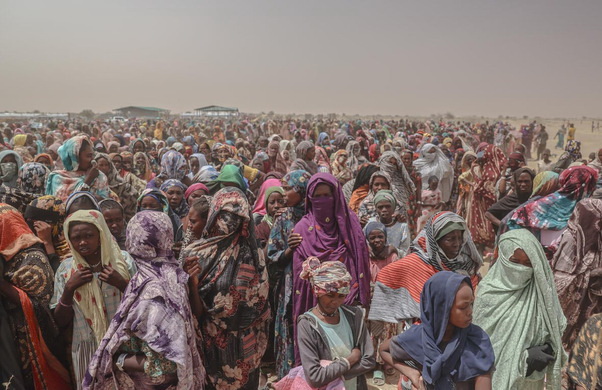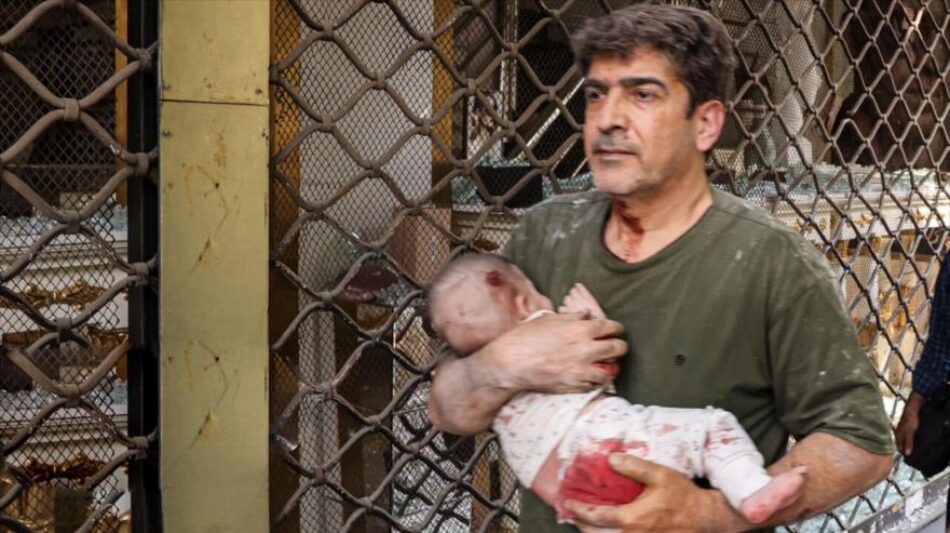The secret of freedom lies in educating people, whereas the secret of tyranny is in keeping them ignorant.- Maximilien Robespierre

The Human Cost of Wars
By Sergio Ferrari: In a global climate of ever-increasing armed conflicts, civilian victims include women, children, human rights activists, and journalists.
In 2024, a civilian died in an armed conflict every 12 minutes worldwide, representing a 40% increase compared to the previous year. Records from the United Nations Office for the Coordination of Humanitarian Affairs (OCHA) show more than 48,000 civilians killed in armed conflicts. Of these, 21,480 were women and 16,690 were girls and boys (80% and 70% respectively, in Gaza, https://news.un.org/es/story/2025/06/1539581).
Mutilated Press
According to OCHA, these gruesome numbers—with "conservative" figures compared to other sources—also reveal the "persistence of deadly attacks against human rights defenders." Indeed, more than 500 men and women were killed as part of the repressive response against their humanitarian work, and Latin America and the Caribbean was the region where the highest number of these murders occurred. During that same period, another 123 activists disappeared for the same reason.
In 2024, the murder or disappearance of a journalist, trade unionist, or humanitarian activist was recorded every 14 hours. Last year, OCHA recorded 82 deaths of communicators. More 60% of these homicides occurred in conflict zones, the highest proportion in more than a decade.
This figure, however, is well below that recognized by other reliable organizations. The International Federation of Journalists (IFJ), for example, recorded 122 homicides among its colleagues—more than half related to the conflict in Palestine—and described 2024 as one of the “deadliest” in recent decades (https://www.ifj.org/es/sala-de-prensa/noticias/detalle/article/122-periodistas-trabajadorxs-medios-asesinadxs-2024-segun-fip).
War Conflicts on the Rise

New armed conflicts have erupted in recent years, “derailing global efforts toward sustainable development, which cannot thrive without peace and security and the protection of human rights,” as the published report notes. by this United Nations agency. While the trend was downward between 2015 and 2022, it reversed beginning in 2022 due to a significant increase in armed confrontations in various regions of the world. Between 2015 and 2024, OCHA documented conflict-related civilian deaths in 16 countries: Afghanistan, Ethiopia, the Philippines, Iraq, Lebanon, Libya, Mali, Myanmar, Palestine, the Syrian Arab Republic, the Central African Republic, the Democratic Republic of the Congo, Somalia, South Sudan, Ukraine, and Yemen.
The conclusions of a recent study by the Peace Research Institute (PRIO) in Oslo are even more worrying: in 2024, the world experienced the highest number of armed conflicts since 1946, surpassing 2023, already a record year. No fewer than 61 conflicts occurred in 36 countries, some of which were affected by multiple simultaneous confrontations. This reality led Siri Aas Rustad, The lead author of this study analyzing trends from 1946 to 2024, asserts that this is not a sudden increase, but rather a structural change. Her conclusion: “Today's world is much more violent and fragmented than it was a decade ago.”
The PRIO study also documents that Africa remains the most affected continent, with 28 national conflicts, followed by Asia (17), the Middle East (10), Europe (3), and the Americas (2). And more than half of the affected states have experienced or are experiencing two or more conflicts each. Last year alone, some 129,000 deaths linked to armed confrontations were confirmed, mostly between Russia and Ukraine, in the Gaza Strip, and in the Ethiopian region of Tigray. (https://cdn.cloud.prio.org/files/31b69202-0728-4852-94e9-a08bdf662fe9/Rustad%20-%20Conflict%20Trends%201946-2024%20-%20PRIO%20Paper.pdf?inline=true).
On a barrel of dynamite... nuclear

The attacks by Israel and the United States against Iran in the second half of June, under the pretext of neutralizing an alleged Iranian nuclear threat, only hide the hidden face of the geopolitical "game" surrounding true military power in the world. The game is essentially played out in terms of nuclear power, that is, the maximum capacity to destroy enemy forces.
According to the recent 2025 Annual Report of the Stockholm International Peace Research Institute (SIPRI), a January inventory of this year estimated the number of nuclear warheads in existence at 12,241, all owned by nine nations (excluding Iran): France, the United States, Russia, the United Kingdom, China, India, Pakistan, the Democratic People's Republic of Korea (North Korea), and Israel. Notably, 90% of this amount belongs to Russia and the United States, powers engaged in extensive modernization programs for their respective nuclear arsenals with the aim of increasing their size and diversity. According to SIPRI, “the world's nuclear arsenals are expanding and modernizing… and a new and dangerous nuclear arms race is emerging at a time when arms control regimes are severely weakened.”
Of this total, 3,912 nuclear warheads are already deployed on missiles or at bases with operational forces ready for use, and 5,702 are stored in reserve, which would require some preparation, such as component installation, transportation, and loading onto launchers before deployment. The remaining 2,627 warheads have been withdrawn from the military reserve but have not yet been dismantled.
As SIPRI points out, if a new agreement to limit these arsenals is not reached, the number of warheads deployed on strategic missiles is likely to increase following the expiration in February 2026 of the 2010 bilateral Treaty on Measures for the Further Reduction and Limitation of Strategic Offensive Arms (New START). Arms development trends continue to consolidate, and there are currently no signs of negotiations to renew or replace the fragile agreements (https://www.sipri.org/sites/default/files/WNF%202025%20PR%20ESP.pdf).
A Worrying and Unpredictable Trend
As SIPRI emphasizes in its 2025 Report, "everything points to the emergence of a new arms race that entails much greater risk and uncertainty than the previous one." This is influenced by "the accelerated development and application of a wide range of technologies—for example, in the fields of artificial intelligence (AI), cyber capabilities, space assets, missile defense, and quantum technology—which are radically redefining nuclear capabilities" and generating new factors of instability. On the other hand, as AI and other technologies accelerate decision-making in crisis contexts, "the risk of a nuclear conflict breaking out as a result of poor communication, a misunderstanding, or a technical accident increases."
Wars are multiplying daily, and those that have broken out in just the last few weeks are generating an apocalyptic atmosphere that some analysts compare to the beginning of World War III. Even if this interpretation may be extreme, how can we deny that the facts are eloquent and that all the figures certify an escalation of violence in many regions of the planet? A planet that already sleeps, every night, on an immense nuclear arsenal sufficient to destroy much of civilization, even the entire civilization. Meanwhile, every twelve minutes a non-combatant dies as a result of war strategies and conflicts. Civilians with proper surnames, mainly, with female names and children's names.
 "La prensa canadiense es cómplice de crímenes de lesa humanidad"
"La prensa canadiense es cómplice de crímenes de lesa humanidad"







